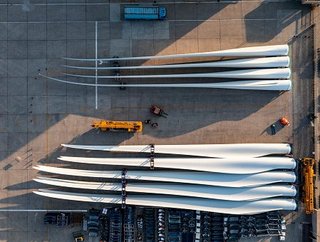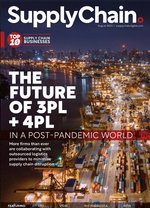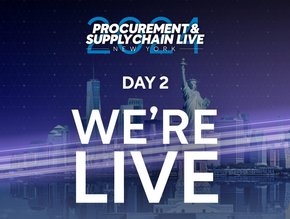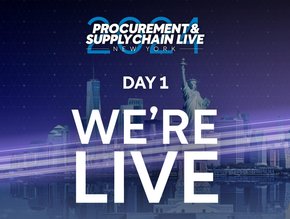Renewable energy supply chains under pressure

Renewable energy is a key plank of decarbonisation, and the move to the net zero goals laid out by world leaders during the Cop26 conference.
With supply chains accounting for up to 80% of an organisation’s carbon footprint, the shift away from fossil fuels towards renewable energies, such as solar, wind and green hydrogen, will be pivotal.
Such a global undertaking was always going to encounter significant challenges, and it seems one of these is the supply chain itself of the renewable energy projects needed to drive our net zero ambitions.
A recent WTW report shows how the adoption of more renewable energies is being hampered by supply chain problems.
Willis Towers Watson (WTW) is a global advisory company that provides data-driven solutions around risk and capital that are designed to make organisations more resilient.
Its 2023 Renewable Energy Supply Chain Risk Report says that the rising price of raw materials, combined with supply chain shortages, bottlenecks and delays, are putting the future of many renewable energy plans at risk.
WTW surveyed 100 risk and supply chain leaders in companies providing technology, infrastructure and power generation in areas including hydro, solar, wind, biofuels, geothermal, battery storage and heat pumps.
Respondents say the rising cost of materials and labour – coupled with volatile energy prices – is impacting income and growth, potentially reducing the scope for future investment in the sector.
Difficulties in attracting and retaining talent (32%) also figures prominently as a supplier problem, as the industry faces major workforce challenges, as demand for green jobs outpaces the availability of qualified workers across the supply chain.
Other problems mentioned include shortages, delays, economic issues and geopolitical instability, while sustainability and cybersecurity are also concerns.
Contractors, suppliers and equipment manufacturers working on major renewable energy projects frequently share systems, adding potential entry points for malware into sensitive equipment.
Solar farms and wind turbines are also typically in isolated locations and are controlled remotely by centralised computer systems, which increases their exposure to cybercrime.
On the subject of wind power, SAP Chief Revenue Officer for Digital Supply Chain, Darcy MacClaren, warns that complex logistics and regulations are hampering uptake of wind energy.
“The complexity of what needs to be done is what folks are struggling with,” says MacClaren. “The supply chain to do this is extremely complicated.”
MacClaren says the issue is that specialised materials are required to make the turbine blades, and adds that the logistics of transporting the blades – which can be as long as a football field – is also hugely challenging.
“Then you have to construct something in the middle of the ocean, which requires special ports and harbours,” she says, adding: “There’s also a lot of uncertainty about the scope of such a supply chain and the development time-frames needed to build these critical resources.”
MacClaren also cites as complicating factors the level of investment required, that there are “gaps in manufacturing” and that “ports and vessels remain uncertain”.
Regulation is another sticking point, she says.
“It’s not just regulations from the federal government, but also from myriad local municipalities that have a say,” she explains. “This can impede production, which adds risk and impacts the investment needed to bring these projects to fruition.”
She adds: “You’ve got to break down those barriers. You’ve got to get all these organisations working together.”
MacClaren stresses that technology can help, from a design, procurement, supply chain, logistics and manufacturing perspective.
“We can help set up a sustainable, resilient intelligent supply chain with all these involved parties,” MacClaren said. “If we can solve the uncertainty of the regulation issues people are concerned with, then we establish a strong foundation to help create a supply chain for offshore and the wind energy industry.”
MacClaren calls for “a catalyst, an industry proponent” to “blast through obstacles” and to “bring disparate parties together, to get a viable industry off the ground”.
“We need an Elon Musk,” she added, referring to Tesla’s ability to successfully mass produce and sell electric cars. “We need a change agent, and I’m not seeing that.”
Returning to the big picture concerning renewable energy supply chain problems, the WTW report underlines the sector’s dependence on critical supplies, where the lack of even one essential item can hold up work on an entire project, which can be costly at a time of high demand.
One of the report’s co-authors, Global Renewable Energy Lead, Steven Munday, says the key thing to bear in mind about renewable energy is that “it’s no longer a power sector but a technology sector”.
Speaking as part of a WTW podcast on renewable energy, he adds: “Renewable energy technology is moving ahead incredibly quickly. That does impact throughout its lifecycle in terms of origination, procurement, construction, and operations.”
He adds that, as well as new technologies emerging around renewable energy, there is also an “upscaling of existing technologies”, including hydrogen, battery storage and wind technologies.
“All of this equipment has to come from somewhere,” he points out, “and we are seeing that the original equipment manufacturers of all technologies are trying to produce sufficient amounts for what is required globally.”
He adds: “That is very difficult, and it is challenging the supply chain, particularly after the pandemic, and we are seeing that there is a major impact on projects' timelines.”
Munday adds that pre-pandemic, renewable energy companies were “in a race to deliver as quickly as possible”, and that sometimes this impacted quality, “especially if there were challenges with the workforce not having the right experience”.
He says post-pandemic, there is now “a move away from less experienced workforces” around renewable energy and also a shift away from ‘just-in-time’ delivery of projects.
He says lessons have been learned from the pandemic, with regard to supply chain interruption and availability issues, and that this is prompting organisations “to be more considered about renewable energy projects and to make sure power transformers, wind turbines or electrolysers are available at an earlier stage “to mitigate potential supply chain delivery and to avoid delay damages”.







